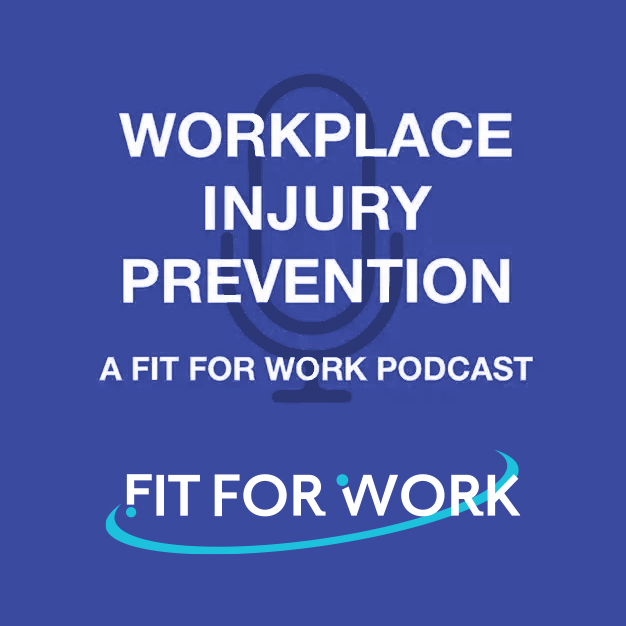By John Ratelle
Senior Vice President of Brokerage Management, Fit For Work
“An ounce of prevention is worth a pound of cure.”
Ben Franklin’s timeless advice is more relevant than ever in today’s workplace. Preventing unnecessary risks that could lead to costly injuries, lost productivity, and other setbacks is always a smart investment. Protecting your employees and business through proactive measures not only safeguards your bottom line but saves you time, money, and stress in the long run.
By reducing workplace injuries before they happen, companies can avoid the high costs of insurance claims, worker replacements, and the complications that follow preventable accidents. In this blog, we’ll highlight the key elements of a successful risk prevention strategy, measurable results, and how these preventive steps can improve both your financial performance and productivity.
Best Practices for Cost Control
A comprehensive risk prevention program is most effective when all departments—Safety, HR, Operations, Finance, Risk Management, and Legal—align their goals and collaborate. By working together, you can create a unified approach that minimizes risks and maximizes performance. A cross-functional prevention program is most effective when each stakeholder understands how it benefits their area of responsibility.
Risk prevention is most effective when all departments—Safety, HR, Operations, Finance, Risk Management, and Legal—align and collaborate.
Similarly, in the context of prevention, claims can be seen as indicators of these breakdowns. The costs of these events extend far beyond just the claim itself. An effective injury prevention program can lead to improved outcomes across various metrics, resulting in enhanced performance and cost savings.
The 4 Ps of Prevention
People – The first step to injury prevention is ensuring the right people are in the right roles. Start by implementing comprehensive testing and evaluations during the hiring process to assess physical abilities and overall fitness for the job.
Identifying employees’ physical limitations prior to an injury ensures proper claims adjudication. For example, if an employee is found to have a 20% shoulder restriction before hiring and later files a shoulder claim, the employer is only responsible for restoring the employee to their pre-hire condition, not to a condition better than when they were initially hired.
Process – How work flows and even what tools are used play a big role in reducing the risk of injury. Ineffective processes, poor equipment, or ergonomic inefficiencies will lead to strain and repetitive stress injuries. Investing in ergonomic services and reviewing processes regularly can drastically reduce these risks, keeping your employees safer and your operations more efficient.
Planning – Even with the right people and equipment, how tasks are performed matters. Since there is a human performance element to work, relying solely on engineering is an incomplete approach. A solid injury prevention plan should identify potential hazards (ergonomics and engineering), institute consistent employee training on safe practices (knowing workforces turn over and work processes evolve), and implement early intervention protocols (think of this as preventative maintenance for the human machine) to tackle issues before they escalate.
Preparation – Preparing your employees by providing proper training is essential. Training employees on lifting techniques, equipment safety, and maintaining proper posture can help them perform their jobs more safely and reduce the risk of injury. Avoid the most common pitfall of assuming training is something to be “solved” via a one-time training event, when in reality, it’s an issue that needs to be “managed” over time because workforces turn over, habits drift, and work practices are not static.
With the right approach, employees can stay safe and productive. Engaging behaviors and early signs of soreness are effective ways to get out in front of potential issues, preventing injuries before they occur.
The Impact of Quality Prevention Programs
Investing in a quality prevention program isn’t solely about reducing injury rates—it’s about reaping the long-term benefits that come from healthier, more productive employees. A comprehensive prevention strategy benefits your business in many ways.
Measurable Results
A robust prevention program directly impacts your company’s bottom line:
- Reduced Workers’ Compensation (WC) Claims: A proactive approach leads to fewer accidents and, as a result, fewer claims.
- Lower WC Claim Costs: By preventing injuries, you can reduce both the total cost of claims and the associated administrative costs.
- Smaller Claim Sizes: Well-trained employees are less likely to experience severe injuries, reducing medical bills and recovery costs.
- Reduced WC Premiums and Collateral: Fewer claims can lead to lower workers’ compensation premiums reducing the amount of collateral required for your program design, ultimately saving you money.
- Lower Volatility: Reducing claims naturally leads to lower volatility in expected losses, making financial outcomes more predictable.
Health and Welfare Benefits
Risk prevention programs help lower the burden on your company’s healthcare and disability plans by reducing workplace injuries. Offering wellness initiatives—like fitness programs and health screenings—help keep employees healthy, reducing the likelihood of injuries before they happen. A wellness culture that focuses on both physical and mental health can foster a more productive workforce.
Productivity and Employee Relations
Prioritizing risk prevention not only protects your employees but also boosts morale and productivity. Companies that emphasize safety and wellness are more likely to attract and retain top talent.
A safe work environment leads to enhanced employee loyalty, job satisfaction, and, ultimately, increased productivity. In turn, this reduces turnover rates and helps your organization maintain a motivated workforce.
Demonstrating ROI on Risk Prevention
Investing in risk prevention is a smart financial decision, and you can measure the return on investment (ROI) through:
- Insurance Savings: By showcasing your commitment to reducing risks, your business can secure lower insurance premiums.
A recent actuarial analysis of an organization’s Early Intervention Employee Injury Prevention program revealed a 63% reduction in claims frequency and a 65% reduction in the company’s loss rate, decreasing from $2.98 per $100 of payroll to $0.72 per $100 of payroll.
- Quarterly Reporting: Regular reports can highlight the success of your prevention efforts, making it easier to show tangible results to key stakeholders.
Communication is critical to engage and motivate all stakeholders to support and participate in making prevention and risk mitigation part of the organization’s culture.
- AI-Driven Insights and Hands-On Engagement: Proprietary AI tools can identify employees at higher risk for injury, allowing companies to personally intervene before a claim happens and reduce future costs.
Invest in Prevention Today
Are you ready to implement a proactive risk prevention strategy that protects your workforce and improves your business? Start by reaching out to us for a consultation, and let’s create a safer, more productive environment together.
 John Ratelle has over 37 years of insurance industry experience. He started his career as a multiline claims adjuster, later moving into the risk management department of National Car Rental where he was part of a team that established a new insurance replacement rental business. He then transitioned into a career at both Marsh and Aon, consulting with large corporate clients to service their risk management needs. Two years ago, John joined Fit For Work Risk Prevention Solutions, using his expertise to establish an analytics and risk solutions division. He holds a bachelor’s degree in economics from St. John’s University and an MBA from the University of St. Thomas.
John Ratelle has over 37 years of insurance industry experience. He started his career as a multiline claims adjuster, later moving into the risk management department of National Car Rental where he was part of a team that established a new insurance replacement rental business. He then transitioned into a career at both Marsh and Aon, consulting with large corporate clients to service their risk management needs. Two years ago, John joined Fit For Work Risk Prevention Solutions, using his expertise to establish an analytics and risk solutions division. He holds a bachelor’s degree in economics from St. John’s University and an MBA from the University of St. Thomas.





